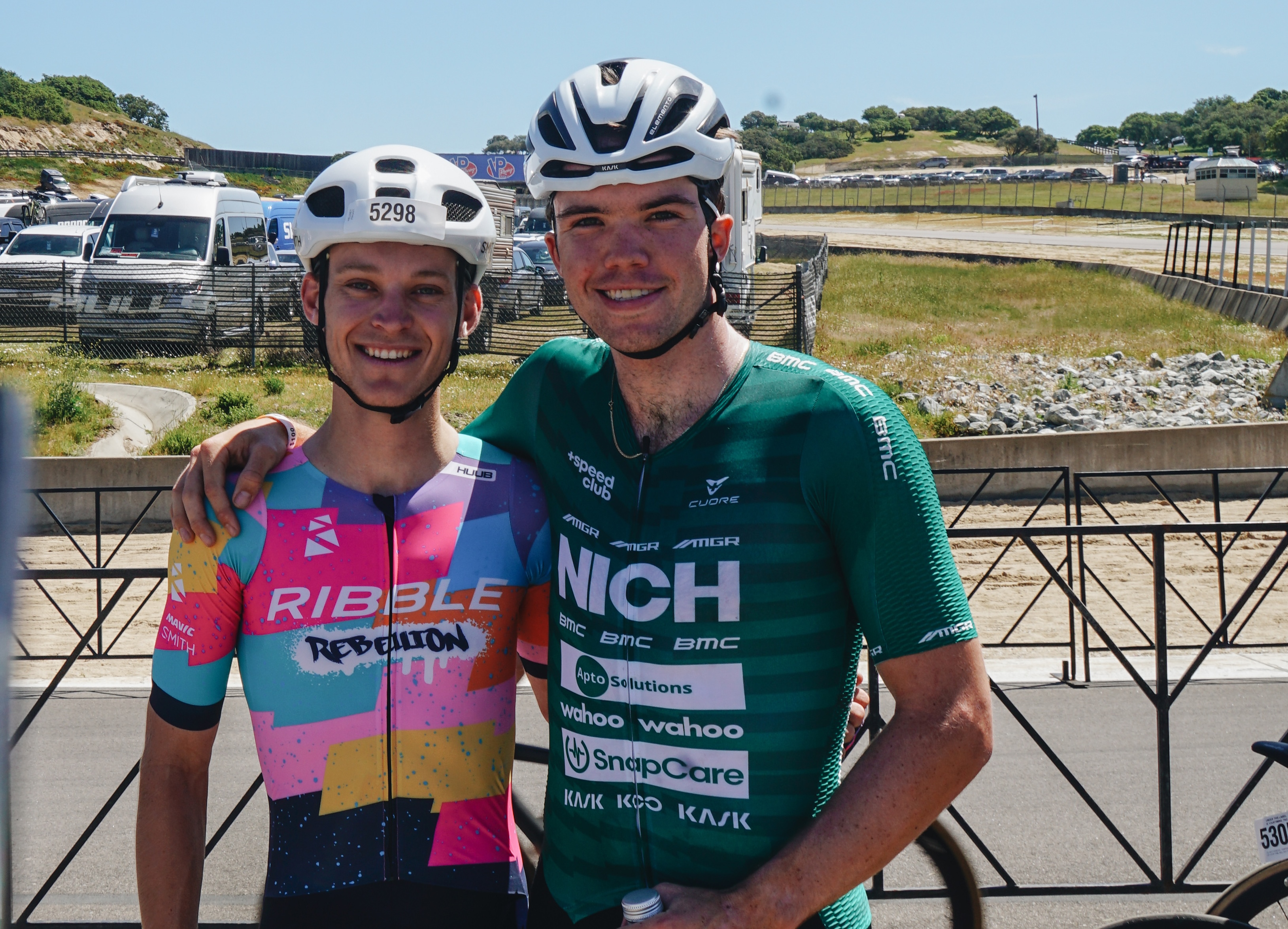Pro cycling plagued by head injuries
Who makes the decision to continue?
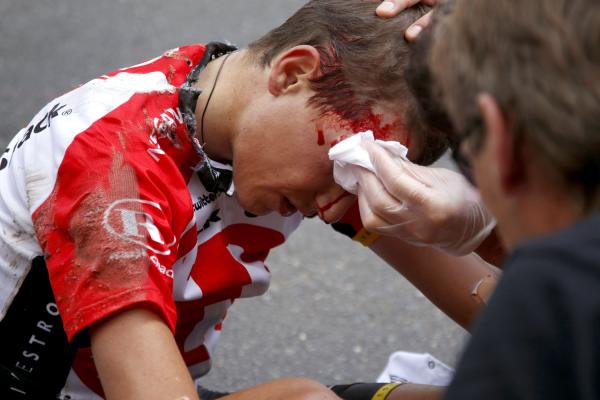
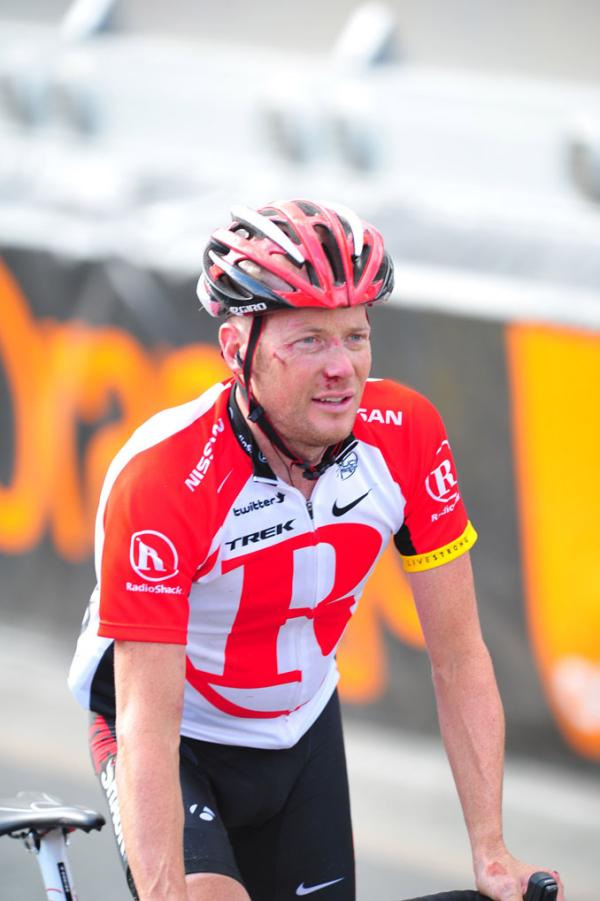
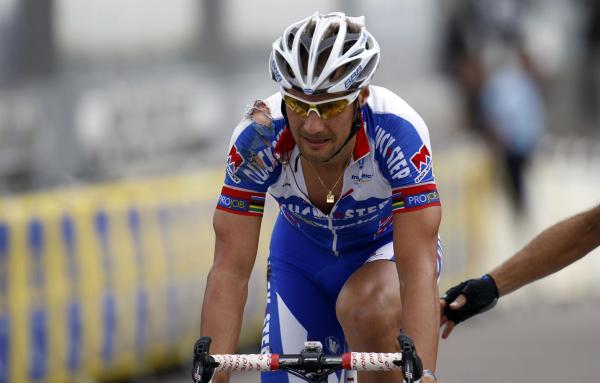
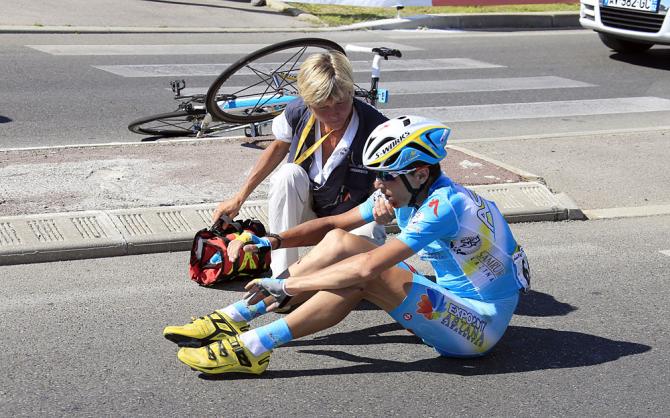
Professional cycling has been plagued by head injuries this season, and during the Tour de France three riders have suffered serious concussions in just one week of racing. Tom Boonen (Quickstep) and Janez Brajkovic (RadioShack) dropped out of the race, and Chris Horner is in doubt after finishing stage 7 in a daze.
The latest spate of traumatic brain injuries (TBI) - the medical term for a concussion - has raised the issue of who should be the one to determine whether a rider can keep racing after landing on his head. Both Horner and Boonen soldiered on despite being less than lucid. Is that healthy?
In Brajkovic's case, it was a broken collarbone that ended his Tour, as in all likelihood he would have climbed back on his bike with his head gushing blood if he could have: it's the mentality of a bike racer in the sport's biggest event. Nobody wants to abandon the Tour de France.
Boonen's directeur sportif left the decision of whether to continue or not on Boonen himself. When he kept riding, the other racers complained that the Belgian was a danger to the peloton. Horner was allowed to ride to the finish in the presence of the race doctor, but he had no recollection of the crash or how long he had been chasing.
The sport has been reeling from the tragic consequences of high-speed crashes in the wake of the death of Belgian Wouter Weylandt in the Giro d'Italia. His head trauma caused instant death, but a subsequent crash by Juan Mauricio Soler left the Movistar rider still unable to communicate following a medically-induced coma because of a TBI.
Cyclingnews spoke with Garmin-Cervélo physician Prentice Steffen, who questioned the idea that an athlete should be the one to evaluate whether he is fit to continue competing, because even if a rider can stand up and climb back on his bike it doesn't mean he is well enough to keep going.
"I think the race doctors should be the ones with the authority to make these decisions," Steffen said, but in his team's case, it is the staff who have to make that difficult call.
The latest race content, interviews, features, reviews and expert buying guides, direct to your inbox!
Riders who continue to compete with TBI's not only risk causing themselves or others to crash due to reduced attention but they also slow the healing progress by raising their heart rates and risk permanent damage should they crash again.
Steffen, an expert in emergency medicine, developed a protocol for evaluating head injuries based on a report from a Zurich conference on concussions in sport. The team's main lead-out man Julian Dean suffered a delayed reaction to a knock he took to the head in the Volta a Catalunya this year, and ever since then the team has carried a step-by-step guide to assessing head injuries. www.cyclingnews.com/news/dean-suffers-horrific-ordeal-after-catalunya-crash
"I came up with it based on research and the Zurich conference on head injuries in sport," Steffen said. At the meeting, attendees developed a protocol for evaluating head injuries called "SCAT2", which improved upon an earlier version of the "Standardized Assessment of Concussions" (SAC) of 2005.
The team has laminated copies of the questionnaire, which Steffen modified to be cycling-specific, inside each team car, and trained all staff on using it to check a rider's well being after a crash in case the team doctors aren't on hand.
The team's policy states, "Even in the absence of obvious injury to the head or damage to the helmet, the rider will then be questioned for signs of confusion, memory loss, loss of consciousness, imbalance, or any other behaviours that indicate the rider is not at his/her normal baseline mental functioning."
Because a rider needs to return to the race quickly if he is able, the team can carry out the checks during the chase back to the peloton or after the rider rejoins. If the rider shows any sign of a significant head injury, the team's policy is to remove the rider from the race immediately.
Clearly Boonen was not given such care. Despite having headaches and vomiting - two major signs of a serious concussion - was allowed by his team to start the race.
Horner would surely have failed at least one of the SCAT2 questions, as his team stated in a press release that he "remained foggy about his surroundings and the events of the day several hours after the stage ended". A video showed him coming across the line saying he didn't understand why he was 12 minutes behind - he had no recollection of the crash.
TBI symptoms can be as mild as an annoying headache, or more severe including confusion, dizziness, vomiting, sensitivity to light and sound or balance problems. Symptoms that may emerge later include insidious issues such as anhedonia - an absence of emotions, loss of memory, difficulty concentrating, loss of senses like taste or smell or problems controlling emotions and rage.
"Most head injuries are evident in the first hour after an accident," Steffen said, but the symptoms of a more serious problem may not show up right away. In Dean's case, swelling on the brain didn't start to cause problems until he was at the airport heading home from Catalunya.
Steffen's protocol dictates that riders are not to be left alone for six hours following the end of the race, because of possible complications like the intracranial hemorrhage which ended American Saul Raisin's career in 2006. The protocol also prohibits riders from flying for three days after a head injury, because rapid changes in atmospheric pressure can affect the blood flow in damaged parts of the brain, Steffen said.
He added that after a blow to the head, the medical staff are in charge of a rider's return to training - evaluating progress at every step, beginning with very low-level activities like a 20 minute stroll followed by checks for symptoms and only allowing for gradually increased efforts after the rider is symptom-free.
Cycling has only begun to treat head injuries as seriously as they need to, and Steffen hopes that more teams will adopt some method for evaluating riders. He once headed up the American Association of Cycling Team Doctors, but the task became too time consuming. Luckily, another group has created the Medicine of Cycling Conference, which will take place in August in Colorado. There will be a panel discussion on concussions at the event.

Laura Weislo has been with Cyclingnews since 2006 after making a switch from a career in science. As Managing Editor, she coordinates coverage for North American events and global news. As former elite-level road racer who dabbled in cyclo-cross and track, Laura has a passion for all three disciplines. When not working she likes to go camping and explore lesser traveled roads, paths and gravel tracks. Laura specialises in covering doping, anti-doping, UCI governance and performing data analysis.
